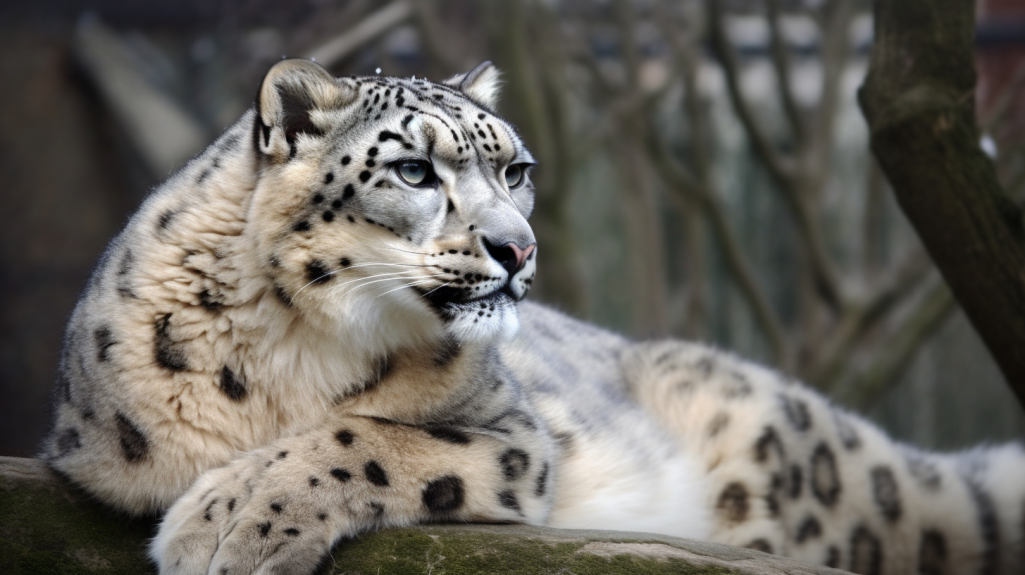The snow-capped peaks of the Himalayas, with their breathtaking vistas and awe-inspiring grandeur, have long captivated the hearts of adventurers and nature enthusiasts. Amidst these majestic mountains resides one of the most elusive and enigmatic creatures on Earth – the snow leopard. With its striking spotted coat and elusive nature, the snow leopard is often referred to as the “ghost of the mountains.” Tracking this elusive creature through the rugged terrain of the Himalayas is a challenge that only the most dedicated and patient individuals dare to undertake.
The Enigmatic Snow Leopard: A Living Legend
The snow leopard (Panthera uncia) is a large cat native to the mountain ranges of Central and South Asia, including the Himalayas. With its thick fur and long, bushy tail, it is perfectly adapted to the cold and harsh environments of high altitudes. However, it is not just the snow leopard’s physical adaptations that make it a true marvel of nature. Its elusive behavior and solitary lifestyle have shrouded the species in mystery for centuries, making it a symbol of wilderness and an icon of conservation efforts.
The Pursuit of the Snow Leopard: A Thrilling Challenge
Tracking the snow leopard is not for the faint of heart. It requires immense patience, dedication, and a profound understanding of the animal’s behavior and habitat. One of the key reasons behind the snow leopard’s elusive nature is its ability to move silently through its rugged terrain. With padded paws and a keen sense of balance, these cats can navigate steep cliffs and rocky slopes without making a sound, leaving behind only the faintest traces of their presence.
For wildlife enthusiasts and researchers alike, tracking the snow leopard is a thrilling challenge that often involves long hours of trekking through challenging landscapes, enduring freezing temperatures, and maintaining absolute silence to avoid startling the elusive cat. Setting up camera traps, studying tracks, and analyzing scat are some of the techniques employed by researchers to study these magnificent creatures while minimizing disturbance to their natural behaviors.
Conservation Challenges and Initiatives
The snow leopard’s secretive nature not only adds to the thrill of tracking but also presents significant challenges for its conservation. The species is classified as vulnerable, with populations declining due to poaching, habitat loss, and retaliatory killings by local communities. Conservation initiatives, led by organizations such as the Snow Leopard Trust and local communities, aim to address these challenges by promoting coexistence between snow leopards and humans, conducting research, and implementing anti-poaching efforts.
The Ethical Aspect: Responsible Tourism and Conservation
As interest in tracking the snow leopard grows, it is crucial to approach this activity with responsibility and ethics. Responsible tourism ensures that the presence of humans does not disturb the natural behaviors of snow leopards or their prey. Local guides and communities play a vital role in promoting ethical wildlife tourism by educating visitors about the importance of conservation and the need to respect the animals’ habitats.
Moreover, responsible tourism contributes to the local economy, providing an incentive for communities to engage in conservation efforts actively. By supporting eco-friendly lodges, hiring local guides, and participating in community-based initiatives, travelers can make a positive impact on both the conservation of snow leopards and the well-being of the communities living in these remote mountain regions.
The Spiritual Connection: A Glimpse into the Culture of the Himalayas
In the Himalayan region, the snow leopard holds a special place in the hearts of the local communities. Often regarded as a symbol of strength, freedom, and mystery, the snow leopard is deeply woven into the cultural fabric of the region. Stories, myths, and traditions centered around this elusive creature reflect the spiritual connection that the people of the Himalayas share with their natural environment. Engaging with local communities and learning about their folklore not only enriches the tracking experience but also fosters a deeper appreciation for the significance of snow leopards in the region’s cultural heritage.
A Journey into the Heart of the Himalayas
Tracking the elusive snow leopard in the Himalayas is not merely a wildlife adventure; it is a journey into the heart of one of the most captivating and fragile ecosystems on our planet. It challenges us to embrace the thrill of the unknown, appreciate the resilience of nature, and acknowledge our responsibility as stewards of this incredible biodiversity.
As we tread lightly, with silent footsteps, through the snow-clad peaks and rugged terrains, we not only seek a glimpse of the ghost of the mountains but also endeavor to ensure that future generations can marvel at its beauty. In this pursuit, we not only discover the hidden secrets of the Himalayas but also uncover the depths of our own connection with the natural world – a connection that inspires awe, humility, and a profound sense of responsibility towards the magnificent creatures that call these mountains home.

